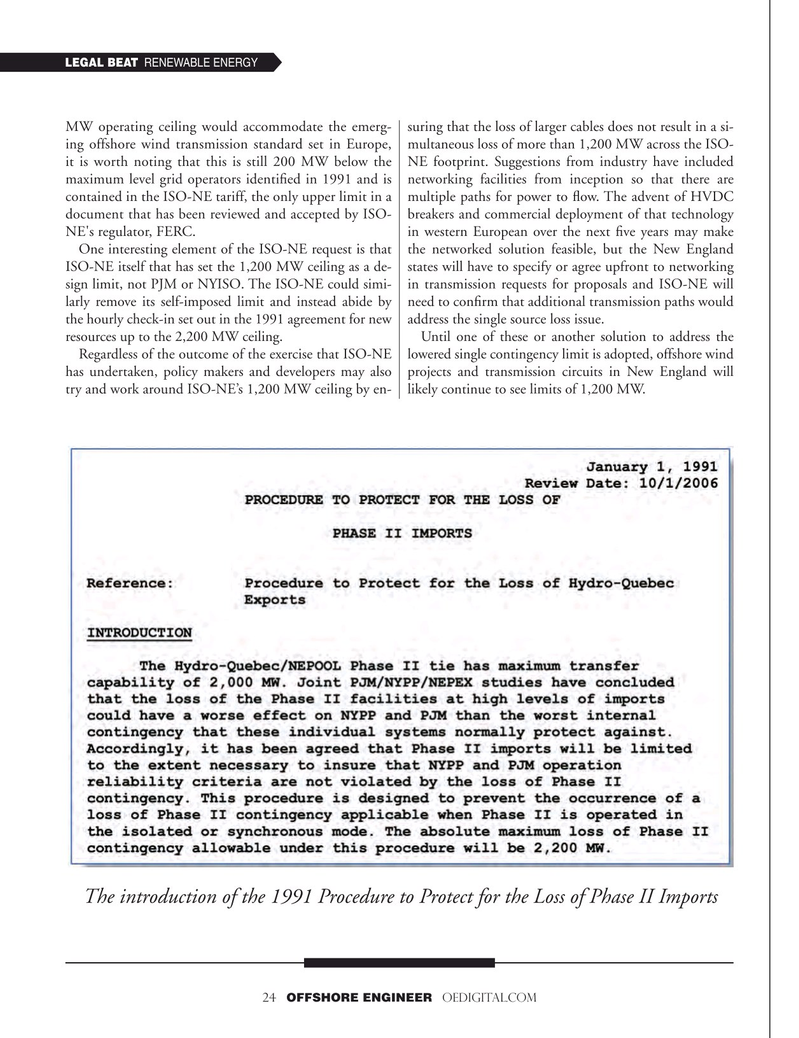
Page 24: of Offshore Engineer Magazine (Nov/Dec 2023)
Read this page in Pdf, Flash or Html5 edition of Nov/Dec 2023 Offshore Engineer Magazine
LEGAL BEAT RENEWABLE ENERGY
MW operating ceiling would accommodate the emerg- suring that the loss of larger cables does not result in a si- ing offshore wind transmission standard set in Europe, multaneous loss of more than 1,200 MW across the ISO- it is worth noting that this is still 200 MW below the NE footprint. Suggestions from industry have included maximum level grid operators identifed in 1991 and is networking facilities from inception so that there are contained in the ISO-NE tariff, the only upper limit in a multiple paths for power to fow. The advent of HVDC document that has been reviewed and accepted by ISO- breakers and commercial deployment of that technology
NE's regulator, FERC. in western European over the next fve years may make
One interesting element of the ISO-NE request is that the networked solution feasible, but the New England
ISO-NE itself that has set the 1,200 MW ceiling as a de- states will have to specify or agree upfront to networking sign limit, not PJM or NYISO. The ISO-NE could simi- in transmission requests for proposals and ISO-NE will larly remove its self-imposed limit and instead abide by need to confrm that additional transmission paths would the hourly check-in set out in the 1991 agreement for new address the single source loss issue. resources up to the 2,200 MW ceiling. Until one of these or another solution to address the
Regardless of the outcome of the exercise that ISO-NE lowered single contingency limit is adopted, offshore wind has undertaken, policy makers and developers may also projects and transmission circuits in New England will try and work around ISO-NE’s 1,200 MW ceiling by en- likely continue to see limits of 1,200 MW.
The introduction of the 1991 Procedure to Protect for the Loss of Phase II Imports 24 OFFSHORE ENGINEER OEDIGITAL.COM

 23
23

 25
25